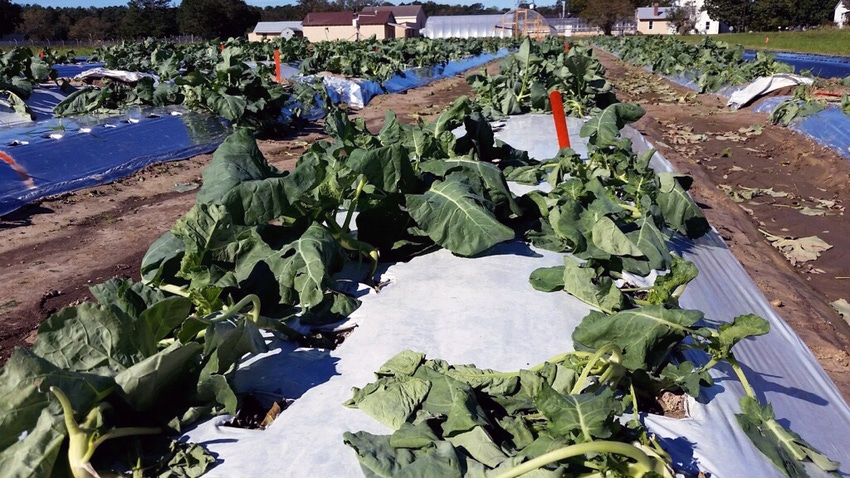October 11, 2016

Clemson University’s Coastal Research and Education Center sustained significant crop damage over the weekend when Hurricane Matthew pounded portions of South Carolina with wind, rain and floodwaters.
According to early estimates, at least 50 percent of the station’s valuable research crops — some of which have been involved in trials that have been ongoing for up to a decade — was destroyed or severely compromised. Depending on how the surviving plants react over the coming weeks, as much as 75 percent of the test crops, which include broccoli, peanuts, sweet potatoes and watermelons, could eventually be lost due to wind damage and oversaturated soil. It’s too early to determine the extent of financial losses.
“After doing a walk-through Monday morning, my initial reaction is that we’re going to lose at least 50 percent of what we had in our fields,” said Brian Ward, research scientist at the REC who is one of the nation’s leading experts on crop experimentation. “Because of the saturated conditions, some of the peanuts and sweet potatoes will rot underground before they can be harvested. And I can see already that we’ve lost 50-75 percent of our broccoli.”
To make matters worse, this is the second consecutive year that the REC has been battered by a catastrophic weather event. The historic superstorm that ravaged South Carolina in 2015 occurred at virtually the same time as this year’s hurricane.
“It’s difficult enough doing this level of research when conditions are relatively good,” Ward said. “But having two gigantic storms in consecutive years has been brutal. Still, farming has always been at the mercy of Mother Nature, so we’re not complaining. Our attitude is, ‘Let’s get to work and set things right.’ ”
On the positive side, Ward said that the facilities and equipment, such as buildings, greenhouses, tractors and monitoring equipment, escaped the storm relatively unscathed. This was largely due to precautions taken by the 10-member staff prior to the hurricane’s arrival. This past Tuesday, the center went into emergency mode, with staffers filling fuel tanks, making sure generators were ready to go and moving expensive equipment to safe places. The staff then followed a state-mandated order and evacuated the station Wednesday before returning this Monday morning to access the damage. The REC will be back in full operation this Tuesday.
One example of research that has been affected by the hurricane involves a collaboration with the nearby U.S. Vegetable Laboratory that is documenting how 16 varieties of broccoli fare when grown using plastic sheeting. This past spring, Ward harvested broccoli that had been covered with black plastic to absorb heat. A second summer harvest — this time covered with white plastic to reduce heat — had also been completed. But the third fall trial — covered by silver plastic to reflect heat — had not yet been harvested when the hurricane struck.
“We have been looking at commercial and hybrid lines to see which varieties grow best under these differing times, temperatures and conditions,” Ward said. “Right now, 50 percent of the fall harvest has been destroyed. Whether or not part or all of the other 50 percent recovers is yet to be seen. But even if just 25 percent of the plants survive, we should still be able to get good data. So it shouldn’t be a total loss. Hopefully, we’ll have similar results with most of our other test crops.”
The Coastal Research and Education Center is located about eight miles inland on Savannah Highway almost due west of Charleston, but its 300-plus acres are bordered by a salt marsh. Ward said that it’s difficult to determine if any of the nearby saltwater flooded the fields. In the coming days, tests will be conducted to see if the soil contains excess amounts of salt, which can take two to three years to flush out naturally.
You May Also Like




